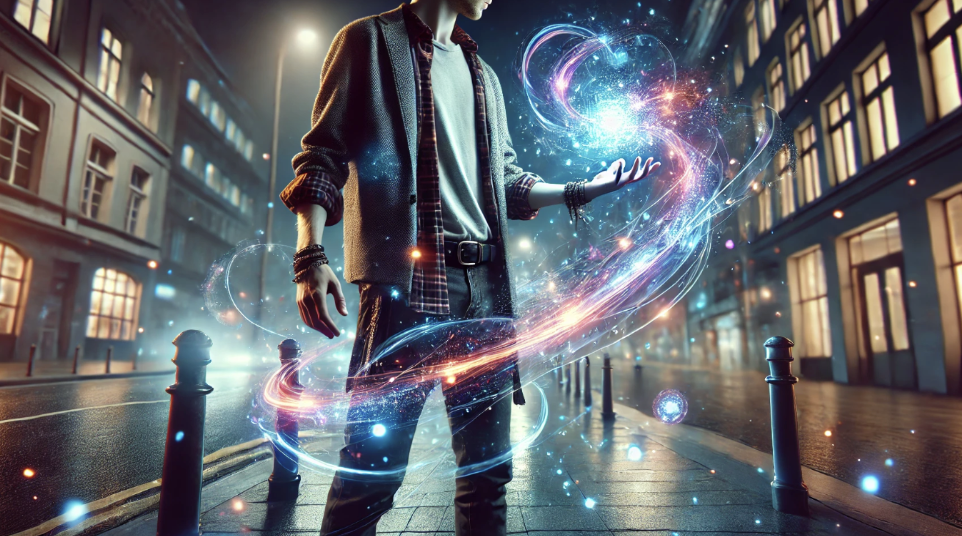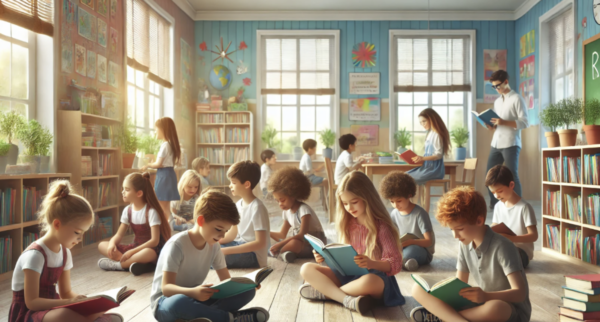In the world of magical realism novels, the line between reality and fantasy dissolves, and the extraordinary becomes a natural part of everyday life. Picture a place where flowers bloom from the grief of a mother, or a town’s memory of time disappears with a forgotten clock. This is the essence of magical realism—a genre that blends the magical with the mundane so seamlessly that the two feel inseparable.
Born from the rich literary traditions of Latin American literature, magical realism was popularized by writers like Gabriel García Márquez, who used it to transform the real world into something more vivid, more symbolic, yet entirely believable. The magic in these stories does not exist to dazzle or escape—it highlights the beauty, tragedy, and complexity of life itself. If you’ve ever wondered how to write magical realism, it starts here, in the quiet spaces where the real and unreal meet, and together, they dance.
Magical Realism Defined: A World Where Magic is Ordinary
Magical realism is a genre that masterfully blends the fantastic with the every day, creating a world where the impossible feels perfectly natural. Originating in Latin American literature, the term was popularized by writers like Gabriel García Márquez and Jorge Luis Borges, who used it to reflect the complexities of their cultures and histories. The genre is rooted in lo real maravilloso, or ‘the marvelous real,’ where the extraordinary becomes an integral part of life’s fabric, not as a disruption but as something inherently accepted.
In magical realism, the magical elements coexist with the real world without explanation or fanfare. Characters interact with these fantastical occurrences—whether it’s a woman ascending into the sky or a ghost giving advice to the living—as if they were ordinary, everyday events. This seamless blending of the real and the unreal is what sets the magical realism genre apart from traditional fantasy, where magical elements often stand out as distinct from reality. In magical realism, the boundaries are blurred, creating a rich, layered narrative that combines elements of reality with an undercurrent of the mystical.
Through this genre, writers can explore deeper social, political, and cultural themes. Reflecting on the human experience through fantasy creates a lens that magnifies both the ordinary and the extraordinary. Magical realism offers readers a unique space where harsh realities and dreamlike wonders coexist, capturing the complexities of life in a magical yet deeply familiar way.
Crafting a Realistic Setting: Grounding Your Magic in the Real World
In magical realism, the magic only works because it’s woven into a world that feels familiar and grounded in reality. The genre relies on creating a setting that mirrors everyday life—one that is tangible, believable, and recognizable. This realistic foundation allows the magical elements to seamlessly blend into the contemporary world without jarring the reader. When the world feels real, the magic becomes part of the story’s fabric rather than a fantastical interruption.
A prime example of this can be found in Gabriel García Márquez’s One Hundred Years of Solitude, where the fictional town of Macondo feels like any rural village in Latin America. The town’s day-to-day struggles, politics, and relationships are so vividly drawn that when something extraordinary happens—like a character living for over a century or a beautiful woman ascending into the sky—it feels as natural as the sunrise. The magical elements shine because they’re grounded in a world that is deeply rooted in reality.
Similarly, Toni Morrison often uses historical settings in her works, such as the post-Civil War South in Beloved. By setting her stories in real, often harsh environments, she allows the supernatural—like the ghost of a child—to exist within a framework that feels painfully true to life. In magical realism, the setting must anchor the magical element of the story, creating a world where magic is not questioned but simply accepted as part of the characters’ everyday lives.
Creating this balance between the real and the magical is key to writing compelling magical realism. It’s in the contrast between the ordinary and the extraordinary that the name magic realism truly resonates.
Introducing Magical Elements: Subtle, Surprising, and Seamlessly Integrated
In magical realism, the magic is not flashy or overwhelming—it is subtle, quietly woven into the fabric of everyday life. The magical elements don’t dominate the story but instead exist naturally within the characters’ reality, accepted without question. This seamless integration is what makes magical realism so captivating. The magic isn’t meant to dazzle; it’s meant to enhance the story’s deeper meaning, slipping into the narrative as effortlessly as any other detail.
For instance, in Neil Gaiman’s works, magical elements often blend with the ordinary in ways that feel both surprising and natural. In The Ocean at the End of the Lane, fantastical creatures and events unfold, but the characters accept them with an almost casual acknowledgment. The magic is not explained—it simply is, and coexists with the mundane aspects of life.
Similarly, Pan’s Labyrinth, directed by Guillermo del Toro, masterfully integrates subtle magic into the brutal reality of post-Civil War Spain. The fantastical elements, such as the faun and the mysterious labyrinth, are presented through the eyes of a young girl, making the supernatural feel as real and as dangerous as the political turmoil surrounding her. The magical details emerge quietly, whether it’s a chalk door that opens new worlds or a fairy hiding in plain sight, adding depth to the story without overpowering it.
By incorporating magic in science fiction in such subtle ways, magical realism allows fantastical elements to become a natural extension of the characters’ world. Everyday objects and events carry hidden layers of magic, inviting readers to view the ordinary through a new, enchanting lens.
Creating Complex Characters: Grounding the Extraordinary in Human Experience
At the heart of magical realism are characters who, despite living in extraordinary worlds, are deeply human in their emotions, struggles, and flaws. What makes these characters compelling is not just their interaction with the magical elements around them, but how those magical elements highlight and mirror their internal struggles. The magic in these stories is not something distant or otherworldly—it’s woven into the characters’ everyday lives, becoming part of their emotional journeys.
In Gabriel García Márquez’s One Hundred Years of Solitude, the Buendía family lives in a world filled with fantastical occurrences. Yet, despite these magical happenings, the family’s core conflicts revolve around very human themes: love, loss, pride, and generational trauma. The magic enhances their struggles without overshadowing them, grounding the extraordinary in the harsh reality of their emotional lives. The Buendías react to the supernatural with the same acceptance they apply to their personal hardships, making the magic feel like an extension of their internal world.
Similarly, in Isabel Allende’s The House of the Spirits, the Trueba family experiences both supernatural events and the brutal political realities of 20th-century Latin America. Clara, a central character with clairvoyant abilities, is a complex figure whose magical gifts are intertwined with the family’s fate. Yet, her magic does not define her—it reflects her inner world, her loneliness, and her desire to connect with the past and future.
In magical realism, characters like the Buendías and Truebas live in worlds where the extraordinary is ordinary, but it’s their emotional depth that makes them truly resonate with readers. By grounding a sense of the magical in the human experience, these stories explore universal truths through fantastical lenses.
Symbolism and Social Commentary: Magic as Metaphor
In magical realism, the magical elements often carry powerful symbolic meaning, offering a lens through which deeper social, political, and historical issues are explored. Rather than simply serving as plot devices, the magic in these stories reflects the harsh realities of the characters’ world, offering rich commentary on the human experience. Through the use of magical elements, authors can express the unspoken, magnify injustice, or expose hidden traumas.
Similarly, Gabriel García Márquez often uses the details of magical realism to critique political corruption and social injustice in Latin America. In One Hundred Years of Solitude, the magical events in Macondo, such as the bizarre rain of yellow flowers or the recurring plagues, serve as symbolic responses to the political turmoil and violence that grip the town. The supernatural occurrences highlight the absurdity of the corrupt systems in place, while the characters’ acceptance of these events mirrors their resignation to the harsh realities of their political environment.
By embedding magic within the fabric of reality, magical realism allows authors like Márquez to comment on the deepest social and political issues of their time. The magic serves as both a metaphor and a mirror, reflecting the invisible forces that shape the characters’ lives and the world they inhabit.
Your Publishing Journey Awaits – Start NowWriting Magical Realism: Techniques to Blend the Real and Unreal
Writing magical realism requires a delicate balance between the real and the fantastical, where magic doesn’t stand out as extraordinary but blends seamlessly into the everyday. To create this balance, magic realist writers must craft a world grounded in sensory details, rich cultural contexts, and everyday objects that anchor the magic in reality. Here are some of the most effective techniques and aspects to focus on for writing magical realism:
Sensory Details
By engaging the reader’s senses—sights, sounds, smells, tastes, and textures—you create a world that feels tangible and believable. This realism allows magical and fantasy elements to slip in unnoticed, making the fantastical feel natural. For example, in The Wind-Up Bird Chronicle by Haruki Murakami, everyday actions like boiling pasta or listening to the wind are described with such vivid detail that when something magical happens—like the protagonist entering a mysterious well—it feels like a logical extension of the world.
Draw Inspiration from Cultural Contexts
South American magical realism, for instance, often reflects the region’s history, folklore, and blend of indigenous and colonial influences. By rooting magic in cultural or historical realities, it gains authenticity. Writers can draw from their own heritage or explore new cultural landscapes to create magical elements that feel connected to the real world.
Incorporate Everyday Objects
Mundane things like clocks, furniture, or food can take on magical qualities without explanation. For example, a teacup might whisper secrets, or a bed might transport someone into another world. The key is to let the magic emerge subtly from these familiar objects, rather than drawing attention to it. The magic is not the focus—it simply exists alongside the ordinary.
Avoid Over-Explaining Magical Details
The magic should be accepted by the characters as part of their world, allowing the reader to do the same. The less you explain the magic, the more it feels like a natural part of the story. This technique keeps the magic grounded and integrated into the fabric of the narrative, as seen in many South American magical realism works.
By using sensory details, cultural and historical context, and everyday objects, and by allowing magic to unfold without explanation, you can create a magical realism story that feels both enchanting and real. In magical realism, the key is subtlety—the magic should be woven into the fabric of reality so that it feels both surprising and inevitable.
Crafting a World That Feels Unreally Real
Magical realism invites writers to blur the line between the real and the extraordinary, crafting worlds where magic quietly exists alongside everyday life. By grounding fantastical elements of fairy tales in sensory details, cultural context, and the familiar, you can create stories that feel both enchanting and authentic. The true power of magical realism lies in its ability to reflect the complexities of human experience through a magical lens, making the ordinary seem wondrous and the wondrous feel natural.
As you explore your own writing, let magical realism be a tool to delve deeper into your characters’ worlds and emotions. Use it to uncover hidden truths, transform the mundane into the mystical, and move your story forward in unexpected ways. There is no formula for a good magical realism story—only the freedom to combine the real and the unreal in such a way that speaks to your unique vision.
FAQs – What is Magical Realism?
What is magical realism?
Magical realism is a literary genre that blends magical or fantastical elements with the real world in such a way that the extraordinary is accepted as a normal part of everyday life. It creates a seamless fusion where magical events happen without explanation, allowing readers to experience a world where the boundary between reality and fantasy dissolves naturally.
How does magical realism differ from fantasy?
While both genres involve magical elements, fantasy often builds entirely separate worlds where magic is a defining feature, usually with detailed rules and explanations. Magical realism, on the other hand, introduces magical elements into a realistic setting and treats them as ordinary, without drawing special attention or offering explanations. This subtle integration is what sets magical realism apart, making the magic feel like an inherent part of the real world.
Which authors are known for writing magical realism?
Some of the most celebrated authors of magical realism include Gabriel García Márquez, whose novel One Hundred Years of Solitude is a hallmark of the genre; Isabel Allende, known for weaving family sagas with supernatural elements; Jorge Luis Borges, who introduced philosophical and fantastical ideas; and Toni Morrison, who uses magical realism to explore history and trauma. These writers helped shape and popularize magical realism globally.
Can magical realism be used in any genre?
Yes, magical realism is highly versatile and can be woven into a variety of genres including historical fiction, romance, mystery, or even science fiction. The defining factor is how the magic is integrated—it must feel natural and ordinary within the story’s realistic context. This flexibility allows writers to explore different themes and styles while maintaining the core essence of magical realism: the blending of the real with the extraordinary.







